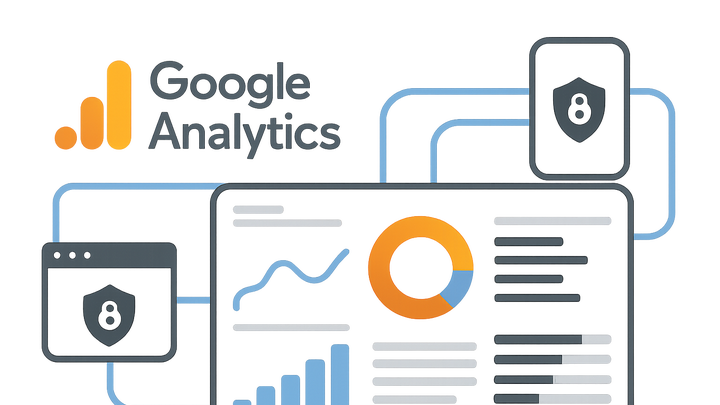Published on 2025-06-27T22:16:16Z
What is Google Analytics 4? Examples and Comparison with PlainSignal
Google Analytics 4 (GA4) is the latest generation of Google’s web and app analytics platform, launched in October 2020 as the successor to Universal Analytics. It introduces an event-based data model that tracks user interactions — such as clicks, scrolls, and pageviews — across websites and mobile apps in a unified manner. GA4 emphasizes privacy by offering cookieless measurement capabilities, user consent management, and granular data retention controls. With built-in machine learning, it provides intelligent insights like predictive metrics and anomaly detection to help businesses anticipate user behavior. Its cross-platform data streams and flexible reporting tools enable marketers and analysts to understand customer journeys more holistically.
Google analytics 4
GA4 is Google's event-driven, cross-platform analytics platform for web and apps, featuring privacy controls and machine learning insights.
Overview of Google Analytics 4
An introduction to GA4’s architecture, goals, and how it differs from Universal Analytics.
-
Event-driven data model
Unlike session-based Universal Analytics, GA4 treats every interaction as an event. This offers more flexibility in defining and measuring user behaviors.
-
Events vs sessions
GA4 tracks interactions (events) rather than grouping hits into sessions, enabling granular analysis of individual actions.
-
Event parameters
Each event can carry up to 25 custom parameters, providing additional context such as button names or content categories.
-
-
Cross-platform tracking
GA4 unifies data from websites and mobile apps into a single property via data streams.
-
Web data streams
Collects events from your website using gtag.js or Google Tag Manager.
-
App data streams
Collects events from Android or iOS apps through the Firebase SDK.
-
Key Features and Benefits
GA4 brings new capabilities focused on privacy, insights, and a user-centric approach.
-
Privacy and compliance
Built-in controls and cookieless measurement help meet evolving data regulations.
-
Consent mode
Adjusts data collection based on user consent status.
-
Data deletion requests
Automates removal of user data to comply with privacy laws.
-
-
Machine learning insights
Leverages Google’s AI to surface trends and predictions automatically.
-
Predictive metrics
Generates metrics like purchase probability and churn risk.
-
Anomaly detection
Alerts you to significant, unexpected shifts in your data.
-
Setting Up Google Analytics 4
Step-by-step on creating a property, installing the tracking code, and configuring events.
-
Creating a GA4 property
In Google Analytics Admin, click “Create Property,” choose Web or App, and follow the prompts to obtain your Measurement ID.
-
Installing GA4 tracking code
Add this snippet to your site:
<script async src="https://www.googletagmanager.com/gtag/js?id=G-XXXXXXXXXX"></script> <script> window.dataLayer = window.dataLayer || []; function gtag(){dataLayer.push(arguments);} gtag('js', new Date()); gtag('config', 'G-XXXXXXXXXX'); </script>-
Using google tag manager
Alternatively, deploy the GA4 tag via GTM for a code-free setup.
-
Comparison with PlainSignal
How GA4 compares to PlainSignal’s cookie-free, simple analytics solution.
-
Cookie-free simple analytics
PlainSignal focuses on essential metrics like pageviews and events without using cookies or tracking personal data.
-
Example PlainSignal tracking code
Implement PlainSignal with this snippet:
<link rel="preconnect" href="//eu.plainsignal.com/" crossorigin /> <script defer data-do="yourwebsitedomain.com" data-id="0GQV1xmtzQQ" data-api="//eu.plainsignal.com" src="//cdn.plainsignal.com/plainsignal-min.js"></script>
